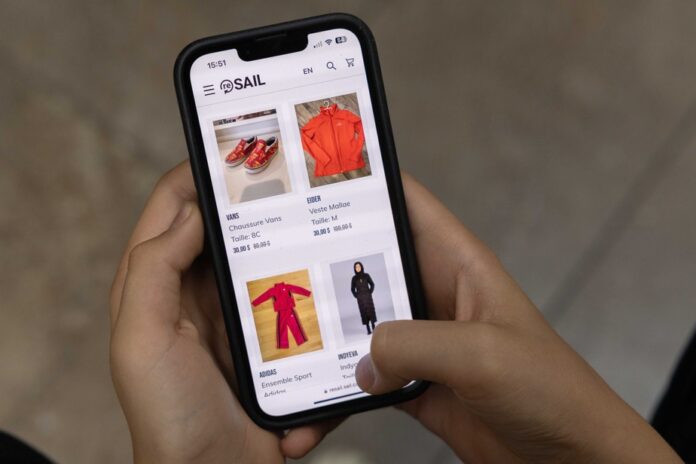SAIL Plein Air dives into the “second hand” adventure. The Quebec retailer of clothing and sports equipment is launching a platform to allow consumers to sell and buy coats, shoes, tents and other second-hand items.
He is not the only one. Womance and Souris Mini have both set up platforms on their website allowing their customers to buy and resell second-hand items from their own brand. Another outdoor giant, which is not yet ready to make the announcement, also intends to try the experiment.
If SAIL prides itself on making an ecological gesture by allowing different products to have a “second life”, the company also benefits from this. The platform will almost systematically enable it to generate new in-store sales. Once the buyer’s payment is settled, the seller who completes a transaction on resail.ca – available to the general public starting Tuesday – has the choice of being paid in cash, where they will receive 70% of the amount of their sale . But if he decides to get paid with a SAIL gift card, he will get the full amount requested for his item, or even up to 110% of it if he is a member of SAIL’s loyalty program, Explore .
So the new marketplace will enable SAIL to generate new sales by incentivizing the seller to replace their used items with new ones? “It’s the cycle of outdoor needs that continues,” replies Mr. Gaudreau. I had a tent for two, now I need a tent for five. We help consumers continue their exploration of the outdoors by equipping themselves for their needs. »
“Several platforms for reselling used products only offer payments in gift cards,” he explains. We want to offer more flexibility to customers by adding a cash payment option. »
Regarding transactions on the site, Mr. Gaudreau assures that SAIL does not intervene between the seller and the buyer. “We operate the marketplace, but we are not involved in the transaction. »
Hiking boots, fleece sweaters or tents sold on resail.ca must all have been designed by brands that are or have already been offered by SAIL. A consumer who wishes to get rid of their old Kanuk, for example, will then have the platform suggest a price to display. But he is not required to comply with it, underlines Nicolas Gaudreau.
The seller will therefore be able to ask for the price that suits him and recover part (money) or all (gift card) of his stake.
In this context, a consumer who wishes to have a real return on investment would have more interest in turning to independent platforms like Marketplace, underlines Myriam Brouard, professor of marketing at the University of Ottawa. “On the other hand, you have to manage everything: the price, the photo, the relationships with future buyers. » In the case of resail.ca, if the item has already been offered in store, we will automatically display the photo that the retailer has in its bank.
She points out that marketplaces run by retailers are better organized, buyers are generally more serious. “It’s a little less of a headache. »
Ms. Brouard is not surprised to see companies embarking on this type of project. “They know there is a market for second-hand goods. And that allows them to keep consumers in their ecosystem. »
For the payment method, the professor justifies this decision by the fact that there are operating costs linked to this type of platform. “Retailers have to repay themselves in some way. »
And what about the ecological and economic aspect of things? By being paid with a gift card, the consumer does not necessarily create more space in their closet since they are replacing a second-hand item with a new one. “Yeah, maybe I’ll trade in a coat for a coat,” Ms. Brouard agrees. But maybe I’ll replace it with the new ski boots I needed. »
Founded: 1978
President and CEO: Norman Décarie
Number of stores: 12 (8 in Quebec, 4 in Ontario)
Number of employees: 1300
Head office: Laval
